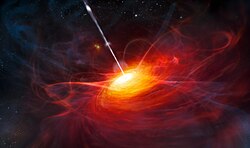External links
- "WASP-48" . Retrieved 2013-06-02.
- "Differential Photometry - WASP-48 in Cygnus" . Retrieved 2013-06-02.
2011 in space | ||
|---|---|---|
2012 » | ||
| Space probe launches |
| |
| Selected NEOs | ||
| Exoplanets |
| |
| Discoveries | ||
| Novae | ||
| Comets | ||
| Space exploration | ||
| | This exoplanet related article is a stub. You can help Wikipedia by expanding it. |


